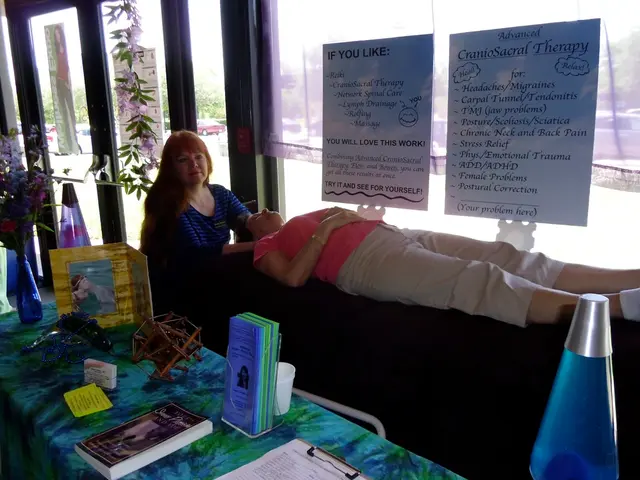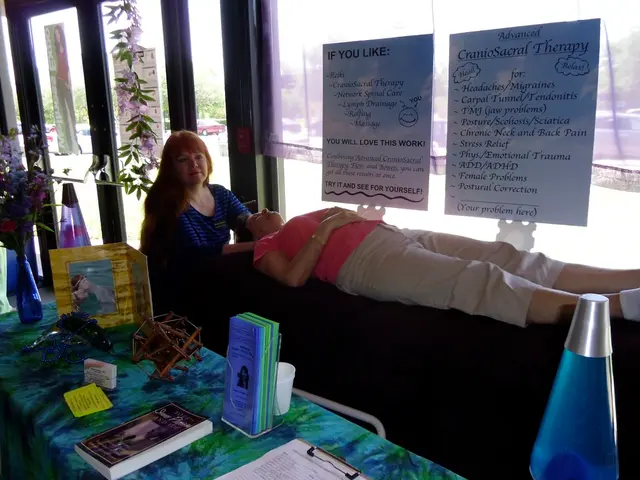Frequency of consecutive orgasms in women: a count of occurrences
In the realm of sexual experiences, multiple orgasms are a topic that continues to intrigue many. While they are more common in females than in males, they are not a universal experience[2]. Approximately 15% of people with vaginas report consistently experiencing multiple orgasms[2], with studies estimating that anywhere from 14% to 43% of women have experienced multiple orgasms at some point[5].
Contrary to common belief, multiple orgasms do not necessarily involve rapid succession for most women. Instead, they often require a brief recovery period between orgasms to restore sensitivity[2].
The ability to achieve multiple orgasms is influenced by a combination of physiological, psychological, and situational factors. Some women are naturally more capable of having multiple orgasms, while others may need to work at it or find it challenging[2]. Sexual self-esteem, communication, and a variety of stimulation play crucial roles in the likelihood of experiencing orgasms, including multiple ones[4].
Relaxation, comfort, and emotional connection are essential for orgasms to occur. Stress, anxiety, or relationship issues can hinder the process[4]. Masturbation can be a valuable tool for understanding what works best and is often reported to lead to more consistent orgasms than partnered sex[3].
Here are some evidence-based techniques that may help increase the likelihood of experiencing multiple orgasms:
1. Strengthening the pelvic floor muscles through Kegel exercises can enhance orgasmic potential and intensity[2]. 2. Experimenting with different types of stimulation, including clitoral, vaginal, and G-spot stimulation, can help some women reach orgasm more easily and potentially experience multiples[4]. 3. Taking breaks to allow sensitivity to return is beneficial for most women[2]. During this time, switching activities or focusing on other erogenous zones can maintain arousal. 4. Focusing on deep, mindful breathing can help maintain arousal and reduce tension, making it easier to reach orgasm again[2]. 5. Open communication about desires, boundaries, and preferences with a partner increases the chances of satisfying sexual experiences, including multiple orgasms[4].
It's important to note that individual variation is normal—what works for one person may not work for another, and there is no “right” way to experience orgasm[1][4]. If orgasm difficulties persist, consulting a healthcare provider or sex therapist can help address underlying physical or psychological factors[1].
In summary, multiple orgasms are possible for a significant minority of women, but not universal[2][5]. Techniques such as pelvic floor exercises, varied stimulation, relaxation, and open communication can increase the likelihood of experiencing multiple orgasms[2][4]. Understanding individual preferences and needs is key to enhancing sexual experiences and promoting a healthy sex life, which offers various health benefits, including stress relief, lower risk of heart health issues, improved self-esteem, better immune health, better sleep, reductions in anxiety and depression[6].
- The degeneration of health-and-wellness, particularly in the realm of sexual experiences, can lead to challenges in achieving multiple orgasms due to factors such as stress, anxiety, or relationship issues [4].
- In the field of sexology, studies have found that approximately 15% of people with vaginas consistently experience multiple orgasms, a phenomenon that is still being researched and better understood [2].
- Science continues to explore the predictive factors of COPD, but research has also shown a connection between women's health, including sexual health, and various physical and mental benefits [6].
- Aside from multiple orgasms, the macular degeneration in aging can negatively impact visual health, making it essential to maintain overall health-and-wellness and consult healthcare providers regularly [6].
- The AQ (Accountancy Quotient) and other psychological assessments are increasingly used to understand an individual's sexual behavior and preferences, playing a crucial role in promoting sexual health and wellness [1].




